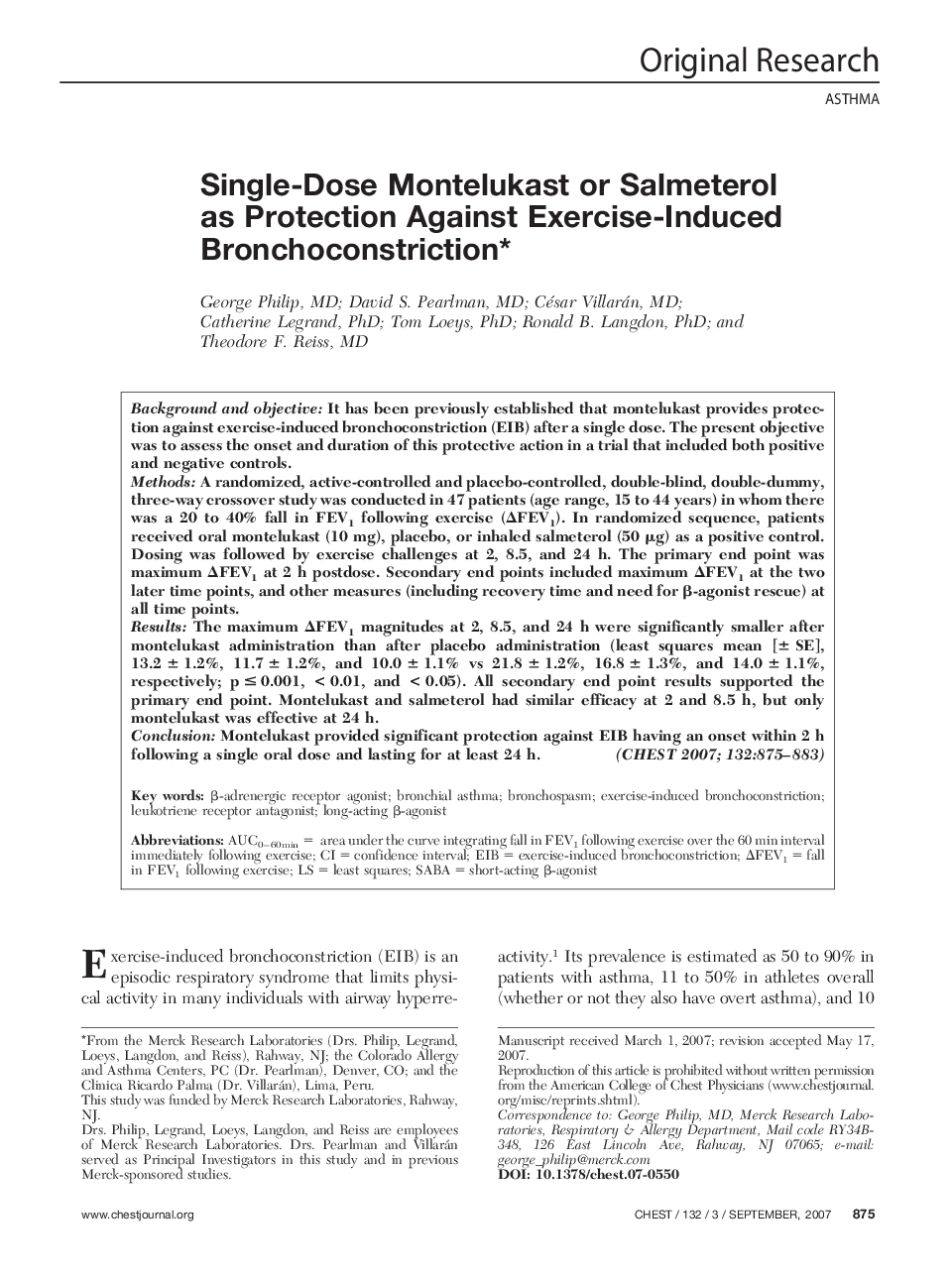| Article ID | Journal | Published Year | Pages | File Type |
|---|---|---|---|---|
| 2905110 | Chest | 2007 | 9 Pages |
Background and objectiveIt has been previously established that montelukast provides protection against exercise-induced bronchoconstriction (EIB) after a single dose. The present objective was to assess the onset and duration of this protective action in a trial that included both positive and negative controls.MethodsA randomized, active-controlled and placebo-controlled, double-blind, double-dummy, three-way crossover study was conducted in 47 patients (age range, 15 to 44 years) in whom there was a 20 to 40% fall in FEV1 following exercise (ΔFEV1). In randomized sequence, patients received oral montelukast (10 mg), placebo, or inhaled salmeterol (50 μg) as a positive control. Dosing was followed by exercise challenges at 2, 8.5, and 24 h. The primary end point was maximum ΔFEV1 at 2 h postdose. Secondary end points included maximum ΔFEV1 at the two later time points, and other measures (including recovery time and need for β-agonist rescue) at all time points.ResultsThe maximum ΔFEV1 magnitudes at 2, 8.5, and 24 h were significantly smaller after montelukast administration than after placebo administration (least squares mean [± SE], 13.2 ± 1.2%, 11.7 ± 1.2%, and 10.0 ± 1.1% vs 21.8 ± 1.2%, 16.8 ± 1.3%, and 14.0 ± 1.1%, respectively; p ≤ 0.001, < 0.01, and < 0.05). All secondary end point results supported the primary end point. Montelukast and salmeterol had similar efficacy at 2 and 8.5 h, but only montelukast was effective at 24 h.ConclusionMontelukast provided significant protection against EIB having an onset within 2 h following a single oral dose and lasting for at least 24 h.
